On June 10, 1967, just three days after Col. Mordechai “Motta” Gur had famously declared, “The Temple Mount is in our hands,” Ashkenazi Chief Rabbi Isser Yehuda Unterman said that Halakha (traditional religious law) forbade Jews to visit the site. Two weeks later, a leading Sephardi authority, Rabbi Ovadia Yosef, stated that even flying over the site was forbidden. Following a similar note, the religious affairs minister at the time, Zerah Warhaftig, noted that, according to Halakha, the Third Temple has to be built by God. “This makes me happy,” he said, “because we can avoid a conflict with the Muslim religion.” The days Israel’s religious affairs minister was made happy by avoiding conflict are over.
My previous article (The Love-Hate Relationship Between Zionism and The Temple Mount) examined the transformation in the thinking of significant segments of the religious-Zionist movement about the Temple Mount. The change, which overturns the tradition with regard to visiting the site, stems from the strengthening of the national over the halakhic element, and by the infusion of a messianic eros, which did not realize itself under the old Gush Emunim paradigm. In short, the struggle for the land shifted to the Mount.
Still, we should consider all aspects of the national aspect of the modern yearning for the Temple Mount, as this longing is interwoven with the Zionist movement and modern nationalism on a number of levels.
First, in the simplest sense, the yearning for the Temple Mount and the Great Temple is a result of the concrete possibility of reaching it. Technically, that is, it is contingent on Israel’s establishment in the Land of Israel and on the conquest of Jerusalem. Thus, the practical possibility exists to change the physical reality to enable a new temple to be built.
Second, and more important, the desire to build the Temple is related to the desire – which also became a realistic possibility upon the modern ingathering of the exiles and Israel’s creation – to unite the whole Jewish people under one national-religious leadership. While during the ancient temple’s time the Jewish people were never united, never committed to the same place or form of worship, it is the imagined community of the modern nation state that ironically makes this presumably possible.
Ultimately, however, yearning for the Temple Mount and the Temple is intertwined with Jewish nationalism because it is the end point of Zionism – the point at which Zionism self-destructs. For Zionism, which proposed the secularization of Judaism and its conversion from religion to nationality, built itself on the ancient messianic scaffolding of the hope for the ingathering of the exiles. The ultimate goal of the Jewish messianic tradition was always to establish a kingdom, and the independent Jewish state definitely meets the initial conditions to that end.
However, the messianic myth also has as-yet unrealized conditions: Temple and king. The question, then, is whether secular Zionism could decide to halt its headlong dash on the messianic track at a particular point only because it would be less convenient to continue further.
This is not a question of government decisions or military capabilities, but about the internal logic of a particular ideology: whether the ideology can develop critical reflexivity and demarcate an internal boundary that entails a halt or change. Aditionaly, it is a question about the encounter between modern consciousness and the religious and mythical elements that are churning in its depths, between the modern, secular subject and the primeval religiosity that is embedded in its psyche and interwoven into its culture.
Dormant mythic seeds
This last issue, reflecting the explosive encounter between rationalism and mysticism, between secularity and religion, is almost taboo in the world of modern research. Nevertheless, it needs to be asked. In fact, if we believe that we do not possess a pure and immortal soul, and that our inner life reflects only a complex, integrated crystallization of genetic and cultural conditions, the question of their design is doubly important. For if we are in our essence not separate from this world and its material conditions, it follows that those conditions are what our psyche consists of, and, as such, determine its mode of existence and guide its path.
If we add the supposition that not only present-day culture, but also the entire course of history and development exert influence in shaping us, we can conclude that ancient cultural forces continue to reside within us, and that even if they have undergone various transformations and sublimations, they continue to guide our behavior in covert ways.
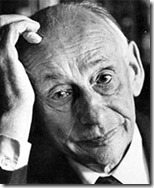 Was this not what the scholar of Jewish mysticism, Gershom Scholem, was referring to in his famous letter, in 1926, to the theologian Franz Rosenzweig? That was the gist of this “declaration of allegiance to our language,” as the letter became known, and that was its warning: that in the long term, it would not be possible to evade ancient residues latent within our culture.
Was this not what the scholar of Jewish mysticism, Gershom Scholem, was referring to in his famous letter, in 1926, to the theologian Franz Rosenzweig? That was the gist of this “declaration of allegiance to our language,” as the letter became known, and that was its warning: that in the long term, it would not be possible to evade ancient residues latent within our culture.
According to Scholem, the renewed encounter with Hebrew and its innate sanctities was a “threat [that] confronts us [as] a necessary consequence of the Zionist undertaking … Will its submerged religious power not erupt one day?” He went on:
Each word that is not newly created but taken from the ‘good old’ treasure is full to bursting with explosiveness. A generation that inherited the most fruitful of all our sacred traditions – our language – cannot, however mightily it could wish, live without tradition … God will not stay silent in a language in which he is invoked a thousandfold back into our life … The revivers of the [Hebrew] language did not believe in the Day of Judgment, to which they destined us by their acts. May the recklessness which has set us on this apocalyptic path not bring about our perdition. [Based on published translations of the text by Gil Anidjar, Jonathon Chipman and Alexander Gelley.]
Scholem is talking about secularized Hebrew, but secular Zionism itself, with its project of ingathering the exiles and establishing a sovereign state, is no more than the secularization of the Jewish messianic tradition. Can it be the case that not only language but a national framework, too, can revivify dormant mythic seeds and allow them to flower?
‘Water of life’
In March 1936, Swiss psychiatrist Carl Gustav Jung published an essay about events in neighboring Germany. Jung viewed the rise to power of the Nazi Party as a process of mass psychological enthrallment. Indeed, as a surrender to ancient mythic forces that were repressed for thousands of years and now, as he watched, terrified, were returning to seize the consciousness of the Germans.
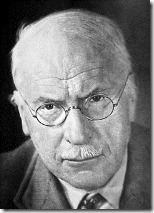 The essay’s title, “Wotan,” indicates the primal source of the resurgent myth: Wotan was the god of storm, rage and war of the ancient Germanic tribes. For Jung, Wotan is not an autonomous heavenly entity, but a collective archetype implanted within the heart of a human community, a nation.
The essay’s title, “Wotan,” indicates the primal source of the resurgent myth: Wotan was the god of storm, rage and war of the ancient Germanic tribes. For Jung, Wotan is not an autonomous heavenly entity, but a collective archetype implanted within the heart of a human community, a nation.
According to this viewpoint, German culture has never freed itself of Wotan, and the god’s patterns of existence are waiting to be realized in the culture’s forms of expression. According to Jung,
An archetype is like an old watercourse, along which the water of life has flowed for centuries, digging a deep channel for itself. The longer it has flowed in this channel, the more likely it is that sooner or later the water will return to its old bed.
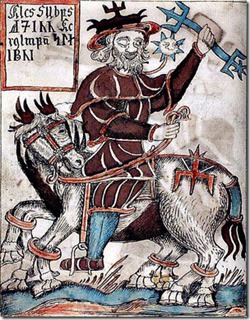 An archetype is a track, a pattern of thought and action. Like a neurological path in the brain, which steers the individual toward habitual actions, an archetype steers cultures toward actions which, even if forgotten later on, in the present, are faithful to their collective psyche, more available and inviting than other paths. Observing the rise of the National Socialists to power in Germany, their political posturing and the fascist aesthetic of their symbols and parades, Jung concluded that the old pagan god had recaptured the hearts of the Germans, casually brushing aside the Christian framework they had ostensibly assumed. "We are always convinced," wrote Jung,
An archetype is a track, a pattern of thought and action. Like a neurological path in the brain, which steers the individual toward habitual actions, an archetype steers cultures toward actions which, even if forgotten later on, in the present, are faithful to their collective psyche, more available and inviting than other paths. Observing the rise of the National Socialists to power in Germany, their political posturing and the fascist aesthetic of their symbols and parades, Jung concluded that the old pagan god had recaptured the hearts of the Germans, casually brushing aside the Christian framework they had ostensibly assumed. "We are always convinced," wrote Jung,
that the modern world is a reasonable world, basing our opinion on economic, political and psychological factors … I venture the heretical suggestion that the unfathomable depths of Wotan’s character explain more of National Socialism than all three reasonable factors put together … a god has taken possession of the Germans and their house is filled with a ‘mighty rushing wind.’
Without any desire to draw a demagogic comparison between present-day Israel and 1936 Germany (a baseless and deplorable comparison, of course), and even if one doesn’t subscribe to Jung’s overall approach (I certainly don’t) – his remarks invite us to reflect on the power of the cultural archetype in our contemporary context. According to Jung, an archetype acquires access to modern consciousness when the individual becomes part of the mass, or when he encounters a situation which resists standard treatment. Have Zionism and Israel reached that point?
Israel’s most intractable internal rivals
Like Scholem, Baruch Kurzweil – the Israeli literary and cultural critic – also discerned the danger of implosion created by the Zionist state’s sovereign rule over the Temple Mount. Back in 1970 he wrote,
The year 1967 confronted pragmatic Zionism, which can be only political and state-oriented, with its most critical decision … Zionism and its offspring, the State of Israel, which reached the Western Wall by the route of military conquest, as the fulfillment of earthly messianism, will never be able to abandon the Wall and forsake the occupied sections of the Land of Israel, without denying their historiosophic [philosophy of history, a term coined by Scholem] conception of Judaism. Pragmatic Zionism is caught in the web of its achievements. Abandoning them would mean admitting its failure as the voice and executor of Judaism’s historical continuity … It is inconceivable to halt the headlong rush of a messianic apocalypse in order to allow the passengers to get out and look at the spectacular views of the Day of the Lord.
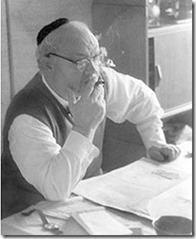 These words remain startlingly relevant. Is it indeed the case that, apart from obvious practical obstacles, there is another reason, internal and inherent, that explains the enormous difficulty Israel encounters whenever it tries to retract its military achievements in that fateful war? Kurzweil is talking about the conquest of Judea and Samaria as a whole, but certainly the jewel in the imperial crown is Jerusalem, and its apex is the Temple Mount. We have reached the time when the State of Israel is faces a confrontation with them, its most intractable internal rivals. Its kryptonite.
These words remain startlingly relevant. Is it indeed the case that, apart from obvious practical obstacles, there is another reason, internal and inherent, that explains the enormous difficulty Israel encounters whenever it tries to retract its military achievements in that fateful war? Kurzweil is talking about the conquest of Judea and Samaria as a whole, but certainly the jewel in the imperial crown is Jerusalem, and its apex is the Temple Mount. We have reached the time when the State of Israel is faces a confrontation with them, its most intractable internal rivals. Its kryptonite.
In this regard, Kurzweil would say, Zionism is laid bare, stripped of the secular covering it assumed, its naked theological core revealed. Zionism grasps that it was always only an outer shell for traditional Judaism – more precisely, for the messianic tradition. Under the force of this revelation, its self-image crumbles and is voided of content.
Oedipus discovered that he was of royal lineage at the very moment of realizing that he had killed his father and slept with his mother. Zionism discovers that it is of religious lineage at the very moment when it conquers Judea, Samaria and the Temple Mount. Its underlying driving force of messianism is revealed, even as the Western liberalism it had imagined was its foundation is shaken.
At the same time, the Temple Mount also represents deadly internal logic for halakhic Judaism. Building a temple, completing the messianic tradition, will render halakhic Judaism obsolete. Those who yearn for a new temple dream of a pre-halakhic Judaism: the period of the priesthood, when blood was splattered on the horns of the altar. In the priestly paradigm, control is in the hands of a priestly caste that is centered not around schools of Torah study but around one temple; one that does not pray but sacrifices animals, does not seek God in holy actions and at holy times, but at one special holy site.
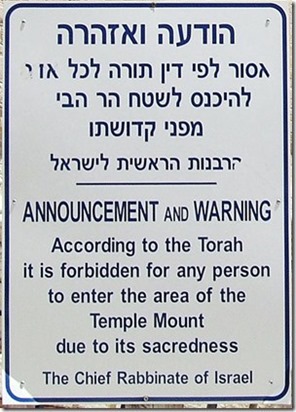 Indeed, the entire Halakha can be said to be a delayed-action mechanism of the messianic myth, or a vast jigsaw puzzle that is never completely assembled. The Temple is the last piece of the puzzle, and once in place it creates a whole picture that obscures the import of each separate part, each religious injunction. The fact that once there is a temple there will no longer be a Halakha is grasped, consciously or not, by the leading rabbis who oppose visiting the Temple Mount.
Indeed, the entire Halakha can be said to be a delayed-action mechanism of the messianic myth, or a vast jigsaw puzzle that is never completely assembled. The Temple is the last piece of the puzzle, and once in place it creates a whole picture that obscures the import of each separate part, each religious injunction. The fact that once there is a temple there will no longer be a Halakha is grasped, consciously or not, by the leading rabbis who oppose visiting the Temple Mount.
It was not by chance that Zionism sanctified the Western Wall nationally, and not by chance that the rabbinate did so halakhically: Both sides found it convenient to see the Mount but not to approach it. Until now, the halakhic consensus has spared Israel the need to address the possible realization of the myth that is churning in its depths, by curbing religious passions with religious force. But as Orthodoxy grows weaker and ethnic nationalism and Temple-driven messianism gain strength, the Israeli state must resort to the use of secular-bureaucratic tools to restrain the religious-mythic thrust. This is a formidable task for the state, as the messianic forces are dislodging it from its traditional course.
House of prayer for all
For all the reasons noted above, the myth cannot be simply repressed, still less annulled. (I am indebted to Prof. Haviva Pedaya for her assistance with this insight.) Zionism’s underlying political theology must be coped with directly and creatively. Secular Zionism’s practice of ignoring this, and its exclusionary attempts in regard to the Temple Mount – and in regard to the content of traditional Judaism as such – must end. In addition to the self-denial involved, this posture is allowing fundamentalist, antidemocratic forces to appropriate Judaism and, in the absence of an alternative, to attract those seeking an answer.
If, as I believe, Zionism is a true and authentic continuation of the Jewish tradition, it must posit a valid alternative to the narrow interpretation of the Temple as an altar around which a family dynasty of priests revolved. Theodor Herzl, the founder of political Zionism, spoke of a modern temple as a kind of philanthropic international institution. However, we also need to consider a religious – and interreligious – center that will be responsive to the religious elements of the messianic vision. In fact, the myth itself allows us to propose this: “for My house shall be called a house of prayer for all peoples,” as Isaiah [56:7] prophesies.
Understandably, this approach obliges respectful and close cooperation with the Muslim institutions that are traditionally responsible for the Al-Aqsa compound. To begin with, Israel’s leaders must make it unequivocally clear that Al-Aqsa Mosque and the Dome of the Rock shrine are an integral, eternal part of every skyline and every future vision for Jerusalem, and that the Muslims’ rights of worship will be upheld fully.
In addition, all talk supposedly hinting at the building of a temple in place of the Islamic holy places must be roundly condemned – that can be done only alongside them, preferably with them. Even though a joint arrangement seems far-fetched now, there is reason to hope that when the national component of the conflict is resolved, or on the way to resolution, the way will be opened to cooperation at the religious level.
Zionism is one of the most dazzling success stories of the 20th century, both pragmatically and conceptually. However, it has not properly addressed its religious core. And within it, at its center, the Temple Mount, which can no longer be a black hole of insignificance. This is the time to talk about it, to reinterpret it. And, as explained earlier, this is also in the interest of the halakhic clergy.
Beyond this, even if it were possible to build a temple without being plunged into a religious war with the whole Muslim world, a temple in its premodern sense would simply be a disappointment. It would be the end of the myth’s existence as a fruitful conceptual framework and the onset of its existence as a limited reality; the end of its existence as an erotic, creative force, and the start of its collapse into a caricature of men in white robes – a grotesquerie of blood, sweat and guts.
“An archetype is like an old watercourse, along which the water of life has flowed for centuries,” Jung says. “Restore our fortunes, O Lord, like watercourses in the Negev,” the famous Psalm prophesies. Both Jung and the psalmist draw a connection between the realization of the myth and the water that flows into the dry riverbeds of the desert.
At this time, many waters are again filling the dry riverbeds of our consciousness. The question is not how to block the waters; the question is how and where to channel them.
—
Published in Haaretz. This is the second of two articles on the subject of the Temple Mount. the first is The Love-Hate Relationship Between Zionism and The Temple Mount.

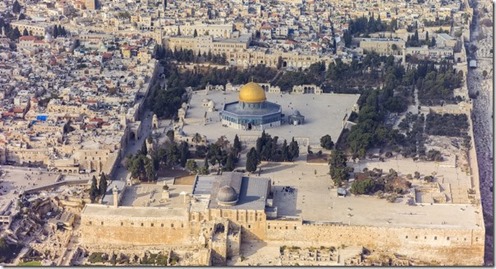


What you think about myth in the judaism tradition? And how the role of myth in the Judaism tradition
Can i share your link in my facebook link abiut myth and modernity. And meybe i take the article for my class diclscussion (religion sosiology and religion pluralism?
Obviously you can share the link wherever you want. About myth in the Jewish tradition, I think it plays much the same role as in other tradition, with the exception that modern Judaism has always had a negative attitude towards myth, and has tried even to deny that Judaism has any mythology.
necessarily the case that myth plays an important role in any tradition and culture even culture come into play important roles in every religious tradition. Judaism is no exception. in the next stage, Judaism contributed on Christianity
Modern Jewish philosophy had a very positive attitude towards myth, people like Buber and Rosenzweig and Scholem, and, of course Kook too,.
I well thought out piece. I’ll offer two constructive comments.
1. It is not true that the construction of the Temple represents the end of halachic Judaism; and more importantly you have not shown it to be true; you merely stated it. While there are views within the Halacha that in the Messianic era, many laws will cease to be obligatory, we have no idea what that means or how to implement it. That is, it requires the Messianic era – which will create a reality in which all peoples, including you, recognise the Divinity at the root of creation. Building a temple will not suffice to create this reality, even if it was somehow halachically permissible to do so. Building a temple is not the same thing as the onset of the Messianic era; the latter leads to the former not the other way around. So I would say that a more honest – and less theatrical – remark about a halacha’s view of the Temple is that a) it is impressible to attempt to build it (though there may be differing views) and b) that if it were built (and used), the full gamit of halacha would immediately apply to it, including detailed laws from the numerous Talmudic gemuras, as well as Rambam’s Mishna Torah and the Shulchan Aruch itself. The notion that, the building of a temple would signal the end of halacha is based on speculative (in my view) notion of how society, rabbis and Kohanim interacted years ago, i.e. that halacha only came about after destruction of temple which if unproven (in my view) and more importantly, the HALACHA and the oral traditions disagrees vehemently with this point of view. So I dont see the basis on which is would be threatened.
2. Suffice to say that all your recommendations are based on the inherent assumption that there is no Divinity in creation. If that is false, your recommendations suffer in their motivation – and yet, interestingly, perhaps the actual recommendations would remain plausible even for minds that are know/believe God’s existence. I wonder what you would come up with if you entertained that assumption. Certainly it would strengthen the practical importance of your words; for as they stand at present you accuse half your nation of simply being unconscious. That is unlikely to lead to practical results.
Reblogged this on jewish philosophy place and commented:
Great piece by Timer Persico on myth, Zionism, and the Temple Mount. The takeaway is this: “If, as I believe, Zionism is a true and authentic continuation of the Jewish tradition, it must posit a valid alternative to the narrow interpretation of the Temple as an altar around which a family dynasty of priests revolved.” But I’m a little unsure. Does Zionism have to present itself as an “authentic continuation of Jewish tradition”? Why not present and even embrace Zionism as the break that it is from Jewish tradition?
Tomer – thank you for this, it’s so refreshing to see someone thinking about these problems with the depth and complexity that are needed.
I wrote something in the summer which also looked at these problems through the lens of Scholem and Psychoanalysis, you might find it of interest. Things hadn’t become as critical regarding the temple mount, but my push for an appreciation of the symbolic nature of Zion and Jerusalem, and a wariness about them becoming concrete again, still feel important. If you want to take a look, it’s here: http://thinkingdafyomi.com/exploring-the-jewish-psyche-the-educational-challenge-of-zionism/
Best wishes and keep up the good work
Elie Jesner
This analysis is original and borders on brilliance. As an Orthodox Jew I of course disagree with the word “myth” in this context, but this is a minor quibble compared to the importance of your thesis. But why did it take 47 years for the Temple Mount to become the central focus of Religious Zionism? Did Gush Emunim take the wind out of the sails of this approach until the Gaza withdrawal? More fundamentaly, is there an alternative approach that can allow Religious Zionism to save itself by deviating from the speeding, oncoming train? Could Rabbi Soloveitchik’s approach provide some direction here?
I need to clarify: as an Orthodox Jew I fundamentally disagree with your solution, but I greatly appreciate your formulation of the problem.
My comments were originally meant to accompany your previous post (“Love-Hate Relationship”), not this post (Word Press does not allow me to delete or redirect comments).The importance and centrality of the early Tannaim who lived during the second Temple period belies the thesis that with the rebuilding of the Temple “control will be in the hands of a priestly caste that is not centered around schools of Torah study” – see the story in Masechet Yoma about the masses who turned away from the Kohen Gadol to follow Shemaya and Avtalyon. When Orthodox Jews pray daily “Uvneh Yerushalayim” and “Et Tzamach David” we are not praying for the end of halakhic Judaism.
I am not studied in many of these details, but have a question:
Since I believe that it is possible to prove scientifically (www.solomonsproof.com) that the messiah will appear, would not the messiah’s appearance change the ground rules for how policies regarding the religion, the state, and the land be conceived and implemented.
Really Good,
If you want to you could take a glance at my new blog
@ http://pimplehead.wordpress.com
Reblogged this on The Missal.